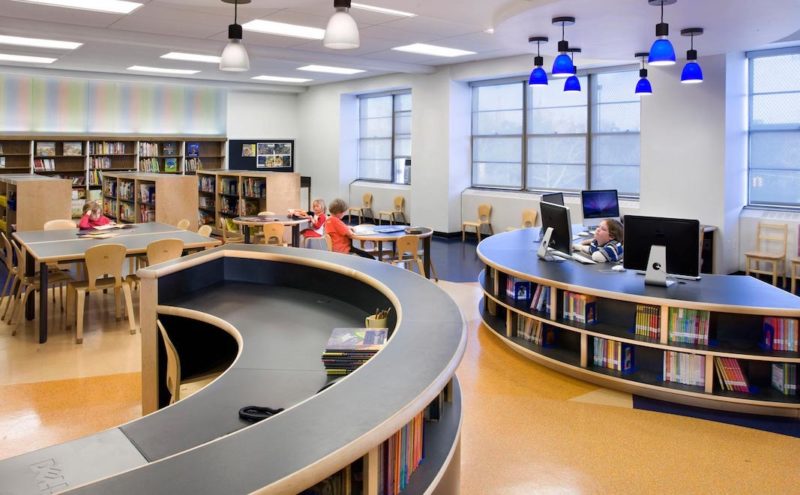 School libraries used to be the place for quiet study, but today there is no more shushing.
School libraries used to be the place for quiet study, but today there is no more shushing.
Students research and collaborate on projects or presentations, create video games, record podcasts, experiment in the makerspace, or work on fan fiction or graphic novels. There are places for clubs and study groups to meet, and guest speakers and authors to host lively book talks. It’s like your favorite indie bookstore, minus the grumpy barista.
“Walking into a school library can be like walking into Willy Wonka’s factory—just about anything could be going on inside those doors and it’s often amazing and sweet,” says McLean County, Illinois, school librarian Michelle Glatt. Recently, one of Glatt’s libraries hooked up with an astronaut on the International Space Station using amateur radio networks, she said.
And yet, school libraries often are on the chopping block when it comes to state and federal budget cuts. It’s as if lawmakers have no idea how librarians prepare students for 21st-century workplaces.
Teaching Students to Navigate the Digital World
Encyclopedia? What’s that? Students have a world of information at their fingertips, and the role of the school librarian has evolved and expanded to keep up. Not only do they help students find information, they help them navigate sources and be responsible and critical consumers of information.
Glatt also is excited about changes in children’s publishing. “The explosion of graphic novels and comics written specifically for young readers, the development of ebooks and audiobooks, and the proliferation of fan fiction and other online sharing of writing has expanded our definition of reading,” Glatt says. “This means a librarian’s collection lives outside the library’s walls as well as within, and librarians must keep up with and promote a diverse and wide-range of materials.”
Partnering with the Public Library
School and public librarians always have shared the work of assisting young people with information needs, cultivating life-long readers, and encouraging them to pursue topics and activities they are interested in and passionate about. But Glatt points out that budget cuts have made it even more necessary to collaborate. Public librarians often visit schools to host book-talks, especially popular with older students, and also work with school districts on library card sign-up initiatives that coordinate with school registration.
“One of our sixth-grade teachers put ‘get a public library card’ on her school supply list this year,” says Glatt, who taught students how to access ebooks and audiobooks from their public library. “This year all K–5 students will be issued full-service cards if they don’t already have one,” which will be valid through twelfth grade. “I can’t wait to start teaching students to use online databases, to request materials from public libraries and through interlibrary loan, and to investigate everything our public libraries have to offer.”
Looking ahead: The Future of School Libraries
As online or distance learning grows popular, Glatt says school libraries can be helpful by “curating digital resources, providing meeting space for students working outside classroom walls, and helping teachers connect with their students.” New technologies are inevitable, but school librarians are excited about the possibilities that lay ahead for educators and students. Says Glatt: “School libraries and librarians thrive despite constant change and joyfully accept the challenge of new ideas. No matter what the future holds, we will be ready.”
How to Advocate for School Libraries
NEA President Lily Eskelsen García points out that in the nation’s most affluent schools, there is always a librarian. With the passage of the Every Student Succeeds Act (ESSA), there is an opportunity for all schools. from inner cities to rural communities, low and middle income, to fund a librarian position.
The law asks states to include success indicators – services and programs that help students succeed in addition to classroom academics — to become standards in their public schools.
“We want that dashboard of opportunity indicators to include library media specialists,” she said.
Find out how you can advocate for school libraries at myschoolmyvoice.nea.org.








